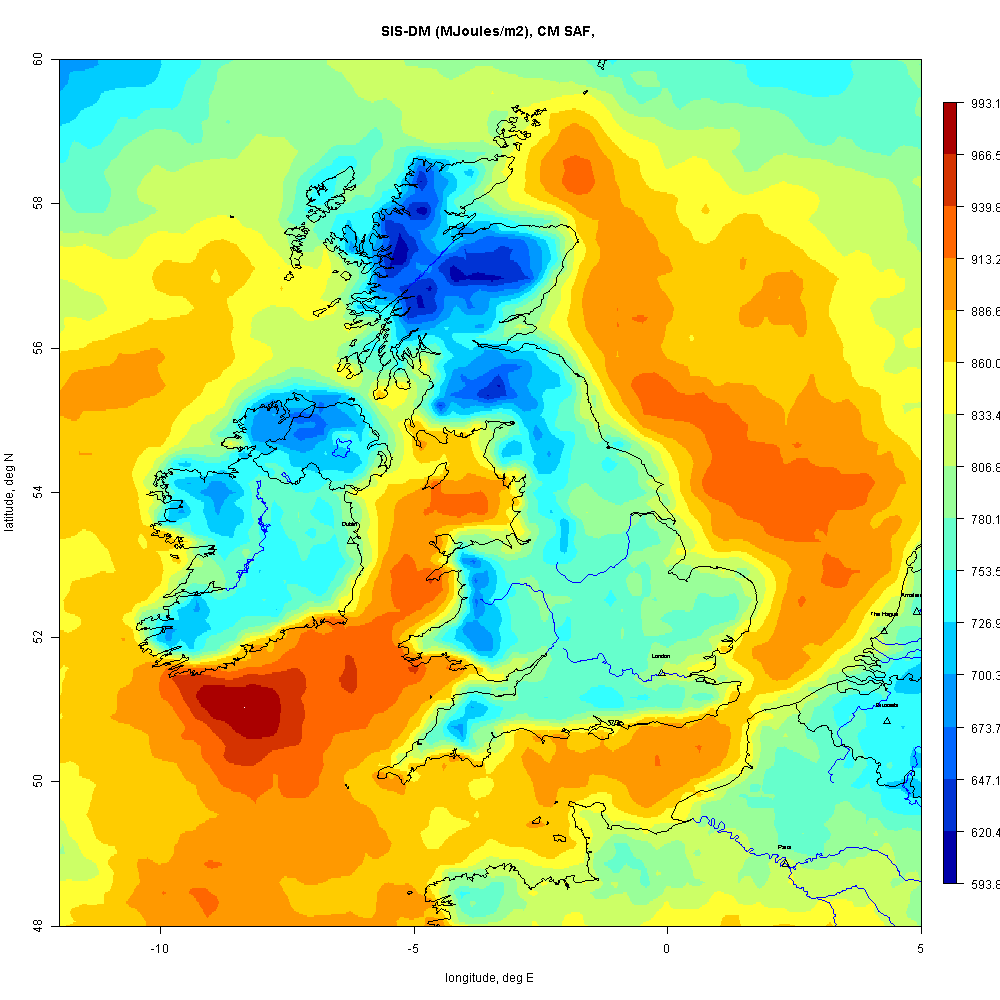I tried every possible solution during the weekend, however the result doesnt seem to be the one i m looking for.
So to sum up... I have a dataset of 42 timesteps for the period of june10th until 21st july 2011. I combine all the timesteps using the CDO and create a file with name 2011new.nc
then I m using the 03calculate statistics cdo script, using the timsum function and create the 2011sum.nc file ( assuming it combined all the time steps, but still in w/m2 and not the kj/m2)
Then I m runing script 10plottimesteps and puting the conversion factor here
# this has also to be considered for the FillValue
na.ind <- which(field==(missval*scale.factor + offset.value))
field[na.ind] <- NA
close.ncdf(nc)
conversion.factor <- 60. * 60. * 24. / 1000.
field <- field * conversion.factor
close.ncdf(nc)
# format the time step for plotting
if (nt > 1) {
So I assume that the 2011sum file with values in w/m2 has now converted into a kj/m2 and plotted. But the map doesnt look reasonable :(
first of all the scale looks inverted, and then the values are quite low
without using the timsum command the result looks like this below----->

I think the problem maybe coming from this script because it determines only one specific period and not all the 42day period
# In case you want to add something to the title of the plot
add2title <- "CM SAF, "
# for files with multiple times: select the time
# Make sure that the selected time is available in the data file
year <- 2011
month <- 7
day <- 16
# select the plot region
lonmin <- -15
lonmax <- 4
latmin <- 40
latmax <- 70
Thank you very much , Looking forward for some news.







